 |
Charles Edward Wagstaffe Bateson was born in Rye on Jan. 14, 1916. He lived with his mother and father Charles W. and Charlotte Bateson, and his older brother Phillip for many years at 167 Purchase Street. He was a member of the Manursing Island Club and a nephew of Mrs. J. H. Schoolfield, of Manursing Way, with whom he lived for several years prior to entering the Service. Charles served as an officer in the U.S. Army Air Corps during World War II.
Service Time: 1st Lt Charles Edward Wagstaffe Bateson, III enlisted, March 30, 1937, in Troop K, 101st Cavalry Squadron A , in New York City. He entered the Army Air Corps as an Aviation Cadet, April 23, 1941. After flight school, he was assigned as a fighter pilot to the 8th Fighter Group, 80th Fighter Squadron and was stationed in New Guinea.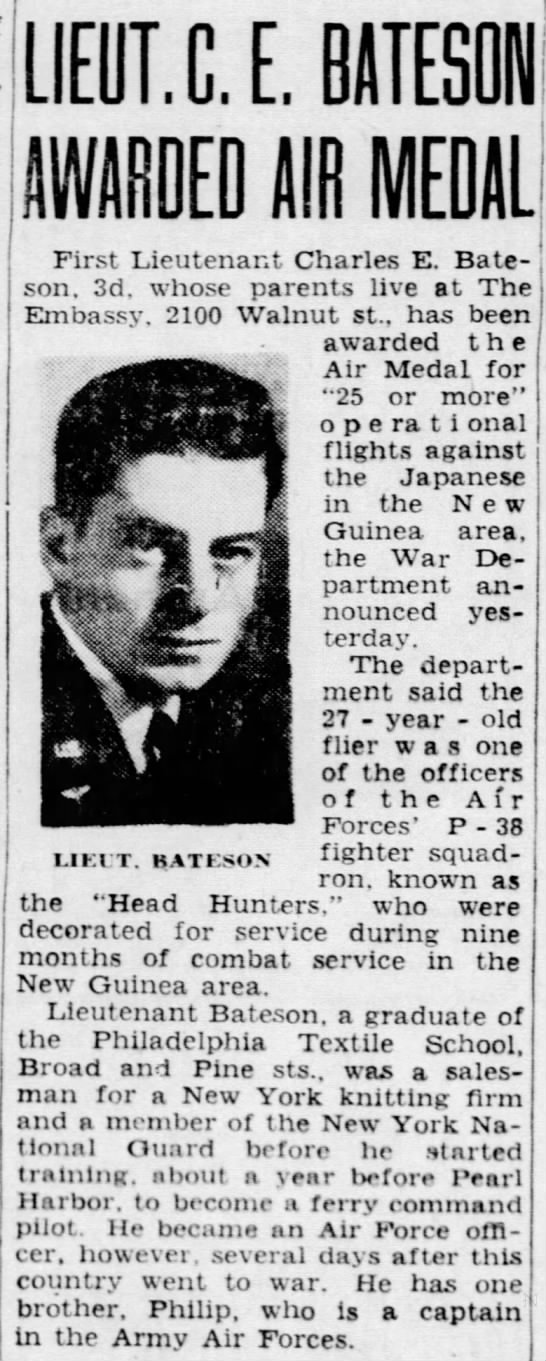
The group was assigned to the South West Pacific Theatre and deployed to Brisbane, Australia, sailing on the Army Transport Ship Maui. After a 21-day voyage, headquarters was established on 6 March 1942. Upon completion of the reassembly of planes, men and equipment they moved to the Townsville area.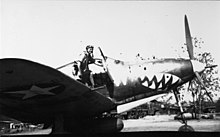
On 26 April while the U. S. Navy was preparing to engage the Japanese invasion fleet headed for Port Moresby, New Guinea, men from the 8th Fighter Group arrived at the 7 mile strip where the 75th and 76th Australian Squadrons were sacrificing their last P-40s to the Japanese Zeros. When the squadrons arrived, their first act included preparation and take-off over the Owen Stanley Range to surprise the Japanese at Lae.
Meanwhile, the Japanese fleet withdrew from the intended invasion after the Battle of the Coral Sea. During the month of May the men were experiencing not only daily and night raids, but endured the shortage of food, excessive heat, rain, mud, mosquitos and necessary parts for planes and vehicles plus continuous alerts, bombing and strafing.
In June 1942 Lieut. Charles Bateson, was decorated with the Air Medal for meritorious achievement while participating in aerial flights in the Southwest Pacific area.
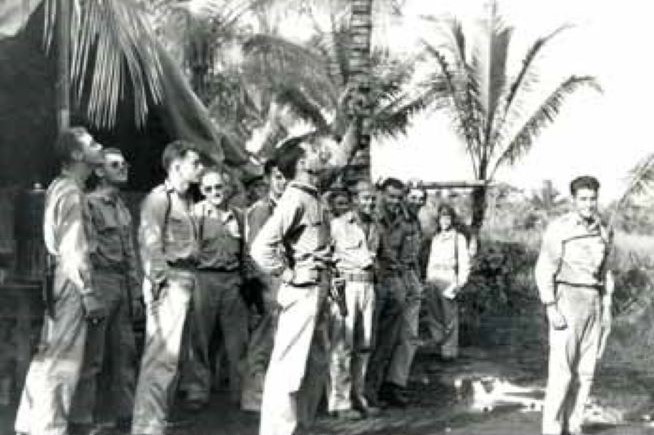 A letter from his commanding officer, Lieut. Gen. George C. Kenney states: "He participated in more than twenty-five operational flight missions during which hostile contact was probable and expected. These flights included interception missions against enemy fighters and bombing planes and aided considerably in recent successes in this theater. I would like to tell you how genuinely proud I am to have such men in my command and how gratified I am to know that young Americans with such courage and resourcefulness are fighting our Country's battle against the aggressor nations." A letter from his commanding officer, Lieut. Gen. George C. Kenney states: "He participated in more than twenty-five operational flight missions during which hostile contact was probable and expected. These flights included interception missions against enemy fighters and bombing planes and aided considerably in recent successes in this theater. I would like to tell you how genuinely proud I am to have such men in my command and how gratified I am to know that young Americans with such courage and resourcefulness are fighting our Country's battle against the aggressor nations."
Returning to Townsville, Australia in late June, the Squadrons were equipped and prepared to leave for Oro Bay when word was received that the Japanese began offensive action to occupy the same territory. On 20 July 1942 the 80th left the group for New Guinea equipped with P-400s for action near Port Moresby. In August 1942 the Japanese invaded Milne Bay. Once again the 35th and the 36th squadrons replaced the Australian 75th and 76th in Milne Bay on 18 September 1942 with the 80th following on 8 November for limited air action.
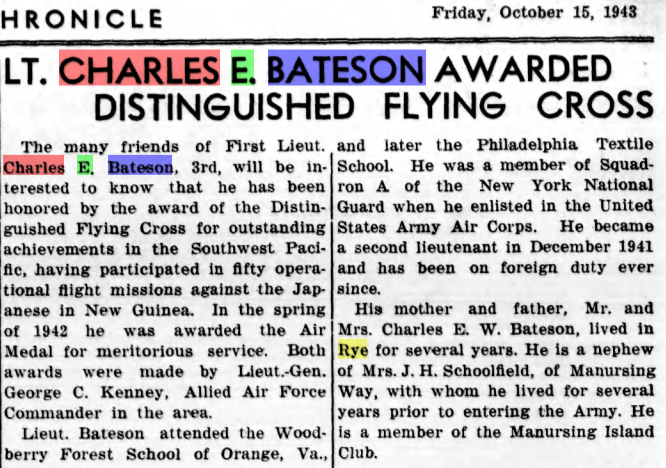 In November of 1942 Charles wrote home as follows: "New Guinea is fascinating. I could write pages about the place its mountains, jungles, the grass hut I live in, the natives and, of course, some other people, but it would only give the censor more work to do with his scissors. The business is serious, but I love my job. Its fun to look down on people who are probably gazing up and wishing you no good end. When you write give a good account, of every one I am dying to hear. Although mail takes several weeks to be delivered here, whatever you say will be news to me and you can have no idea how we look forward to receiving mail. When the mail comes in the interest it creates overshadows all things. Even a raid will take second place to it." In November of 1942 Charles wrote home as follows: "New Guinea is fascinating. I could write pages about the place its mountains, jungles, the grass hut I live in, the natives and, of course, some other people, but it would only give the censor more work to do with his scissors. The business is serious, but I love my job. Its fun to look down on people who are probably gazing up and wishing you no good end. When you write give a good account, of every one I am dying to hear. Although mail takes several weeks to be delivered here, whatever you say will be news to me and you can have no idea how we look forward to receiving mail. When the mail comes in the interest it creates overshadows all things. Even a raid will take second place to it."
The group served in combat until February 1943 flying P-40's. In February 1943 the Group returned to Mareeba where the 80th was equipped with the P-38 Lightning which they took to Port Moresby in March.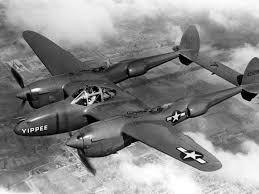 Resuming operations in April 1943, the 8th served in combat operations through the rest of the Second World War, providing cover for Allied landings, escorting bombers, and attacking enemy airfields. Resuming operations in April 1943, the 8th served in combat operations through the rest of the Second World War, providing cover for Allied landings, escorting bombers, and attacking enemy airfields.
Charles E. Bateson, 3rd, was awarded
the Distinguished Flying Cross for outstanding achievements in the Southwest Pacific, having participated in fifty operational flight missions against the Japanese in New Guinea.
He transferred to the 8th photographic Reconnaissance Squadron, 6th Photographic Reconnaissance Group, 5th Air Force. Posted as missing in action, October 8, 1943, while on a mission over Madang, New Guinea. When last seen he was reported heading out to sea in pursuit of a Japanese plane.
On the cockpit of his plane he had lettered
"Lone Wandering, But not Lost". Charles was not officially declared killed in action, until December 15, 1945, two years after he went missing.
His name is inscribed on the Tablets of the Missing at The Manila American Cemetery and Memorial in the Philippines.
|
|
 |